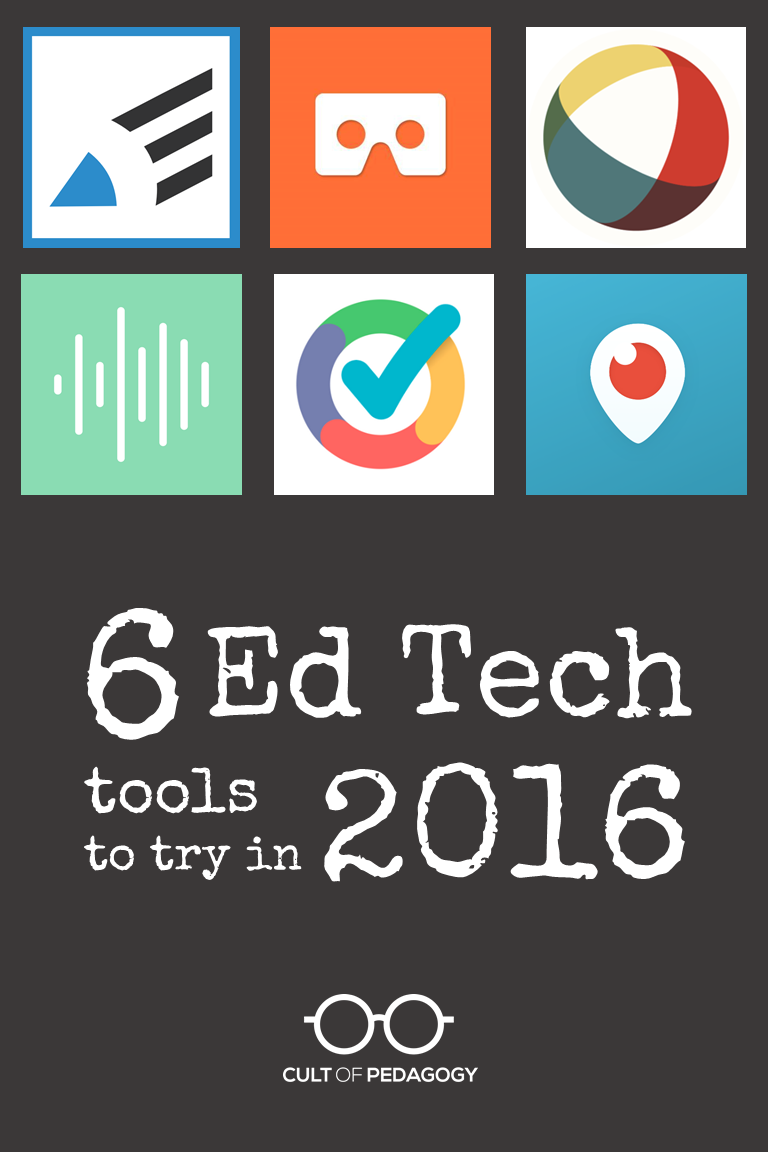
Listen to the podcast:
About a year ago, I published an e-book called the Teacher’s Guide to Tech. Over the last month, I have been updating it for 2016, adding over 30 new tools and refreshing the information I had about the original ones. I have to say, the 2015 version was excellent, but now it’s SO MUCH BETTER. (To take a peek at the guide, scroll to the bottom of this post.)
In the process, I discovered some tools that I absolutely fell in love with, and I wanted to share them with you here. Each of these tools can make your teaching more efficient and effective, and your students’ learning deeper and more engaging.
Let’s take a look.
1. Write About
Update: As of 2023, Write About is no longer available.
One key to improving student writing is to have students write more often. But paperwork is hard to manage, you are limited in how much feedback you can provide, and students often have trouble thinking of ideas. Write About solves these problems, providing students with an online space to write on high-interest topics and get feedback from their peers.
- Students browse through a growing collection of writing ideas, each one paired with a visually compelling image, and write about them.
- Finished posts can then be shared with just one class or made publicly viewable (see examples). Students can comment on each others’ posts.
- Teachers can leave private feedback for students as voice recordings, written comments, or annotations tied to specific sections of the text.
- A database of lesson plans, genre-specific writing ideas, and other teaching resources is available for teachers to browse.
The free option allows for 40 students and a limited number of posts; paid packages offer greater capacity for students and posts. And recently, Write About has added school and district packages that offer greater customization and robust analytics.
2. Google Cardboard
Remember View Masters, those devices that showed two pictures of the same thing, but separated so they looked 3-D? Imagine those, but a LOT better. A virtual reality (VR) headset gives users 360-degree experiences in just about any environment imaginable, and Google has recently introduced its own.
Google Cardboard is: (1) an app you load onto a smartphone which delivers a variety of virtual reality experiences; (2) a viewer (pictured below), which is where you put the phone in order to view these experiences. The viewer comes in its original cardboard version and is also available in other materials and colors, designed by other companies. Google even offers downloadable instructions to make your own viewer at home.
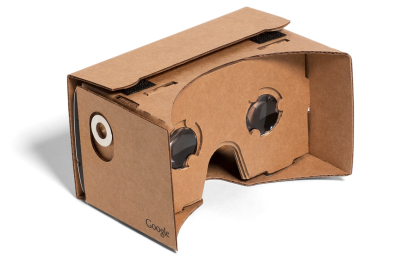
Once you’ve set up the app and gotten your hands on the viewer of your choice, you can then download other VR apps that work inside Cardboard: travel apps, concerts, games, even a camera app that allows you to turn images from your own life into VR memories. Here are some ways VR headsets could enhance learning:
- More advanced and complex science experiments and simulations can occur with no equipment.
- Students can take tours and experience simulations of historical places and events, archaeological digs, and unique geological and natural formations.
- Students can practice public speaking or presenting to a simulated “audience.”
- Virtual experiences could be used as prompts for creative writing assignments or to provide material for research projects.
Watch as these students experience Cardboard for the first time:
One of the most exciting Cardboard-related projects is the Expeditions Pioneer program, where Google supplies classrooms with a set of Cardboards and takes them on incredible tours of far-off places. As of this writing, they are still accepting applications from classrooms that would like to participate.
The Cardboard is for sale through Google, but lots of other manufacturers are also making their own. This one* already has over a thousand positive customer reviews on Amazon. As the video above illustrates, there really is nothing like experiencing it for yourself, and at a cost of less than $20, it’s definitely worth a try!
(*Amazon Affiliate link. If you purchase through this link, I receive a small commission at no extra cost to you.)
3. Versal
Update: Unfortunately, as of 2020, Versal is no longer available.
If you’ve already experimented with flipping your classroom, it may be time to take it to the next level. With Versal, you can create full courses that live online, using any combination of text, video, downloadable PDFs, multiple choice quizzes, and short response questions. But it doesn’t stop there: Versal also offers a drag-and-drop menu of items that would normally require advanced coding, but don’t in Versal: interactive diagrams, Thinglink images, Quizlet flashcards, timelines, LaTeX math equations, music tools, and even an interactive chess game can be added into a course if the teacher wants it there.
Accountability is built right in: When you set up a course, you can track the progress of learners who are taking it, with the ability to see which students have taken which lesson and how far along they are. Learner reports also show scores on quizzes.
Not only would a tool like Versal work beautifully to bundle and deliver your regular content, it would also be a wonderful platform for differentiating instruction for advanced learners, offering training or professional development to employees, or having students create their own courses to demonstrate learning.
4. Noisli
I can’t stop telling people about this one. Noisli is basically a white-noise generator, offering a menu of different sounds you can combine to your liking, creating a nice hum in the background that can help you stay focused. As I type, my favorite combination of sounds is going in the background: “coffee shop” set on a higher volume, with “rain” and “fireplace” set on medium. So it’s like I’m working in a coffee shop, sitting right by a fireplace, while it’s raining outside. It’s lovely.
This video will give you a quick demo:
Noisli could obviously be used to boost your own productivity and concentration at work and at home, but it could also help students avoid distraction while they work independently on computers, laptops, or handheld devices, each student choosing his or her own sound combination. Or you could play something for the whole class during silent reading time to help buffer small, distracting noises.
Just go try it.
5. Formative
In a formative assessment fantasy world, we would be able to look at every student’s work while he or she did it at the exact same time. That way, we could redirect students more quickly and give feedback that is more immediate.
The people at Formative have brought that fantasy to life by developing a platform that lets teachers see the responses of a whole class at one time—even open-response and hand-drawn responses.
Teachers create assessments from scratch right in the Formative platform, or upload an existing PDF or Word document and build a quiz from there. Students access the assessments by entering a class code on their own devices. Then, as students take the assessments, the teacher can look at his or her own device and see what each student is writing simultaneously; each student’s work appears in its own little square and fills up in real time.
Watch how it works:
To score assessments, teachers can set up auto-grading for multiple choice questions and manually grade short answer or hand-drawn responses. And as of September 2015, teachers can also give written feedback to any question while a student is answering it. This free tool might finally help teachers defy the laws of physics and be everywhere at once.
6. Periscope
Update: Unfortunately, as of 2021, Periscope is no longer available.
With live streaming, a camera records something—a conversation, a demonstration, a performance, a meeting—and that event is broadcast live online, in real time. Until recently, if a school or teacher wanted to live stream something, the process required expensive equipment or subscriptions. But now live streaming is available free to anyone with a smartphone.
As the current front-runner in live-streaming apps, Periscope has gotten a lot of attention this past year. Like Meerkat, its primary competitor, Periscope allows users to broadcast live from their smartphones or tablets, take written comments from viewers, and share broadcasts on Twitter.
Here’s a basic overview of how Periscope works: You open an account using your Twitter profile. Then, just like on Twitter, you “follow” other users. Any time someone you follow does a broadcast (or “Scope,” as it is called by users), you are notified in your app, and you can jump in and watch right then and there, and if you do happen to catch the broadcast live, you can send written comments to the broadcaster when the scope is live. For up to 24 hours after its broadcast, that person’s Scope is available for you to watch.
If you are the broadcaster, you can opt to do a public broadcast or keep the broadcast closed to everyone but people who follow you. Because followers can be blocked, this gives the user better control over who watches a Scope.
Here are some ideas for using Periscope in the classroom:
- Connect with experts or students anywhere in the world to conduct interviews, watch demonstrations, or tour faraway places or unique facilities.
- Live stream important school events—assemblies, plays, speeches—to parents who are unable to attend or other family members who live far away.
- Do teacher broadcasts for parents and students, sharing important classroom news and information.
- Share classroom practices with other teachers nation- or world-wide.
One teacher who has done some pretty thoughtful reflective work on Periscope is Starr Sackstein—take a look at a collection of her Periscope broadcasts here. To learn more about the educational potential of Periscope and other live streaming apps, read this excellent Edutopia article, Periscope: Connecting Classrooms to the World.
Want more tools?
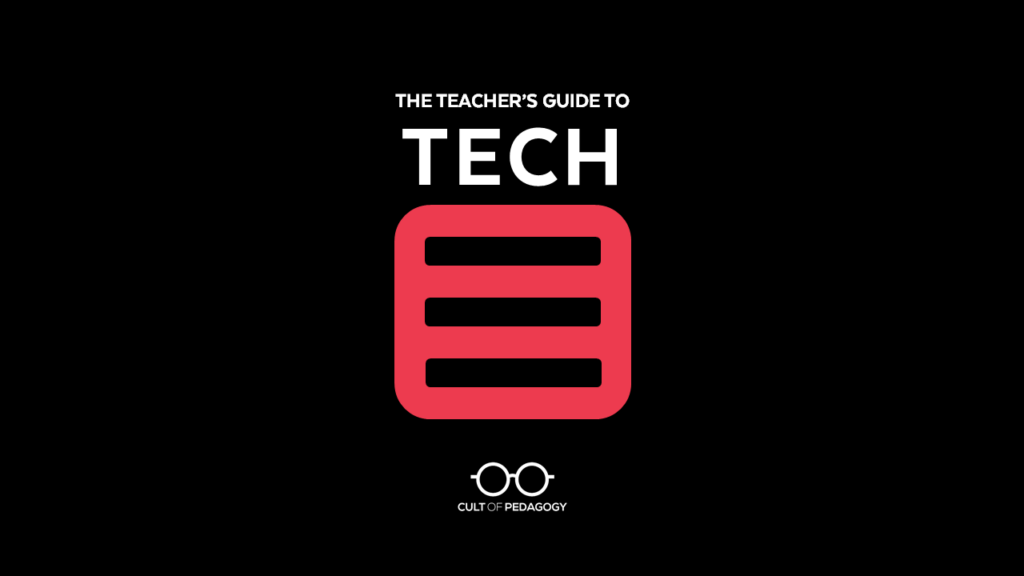
The Teacher’s Guide to Tech
If you’re not yet familiar with the Teacher’s Guide to Tech, let me introduce you: It’s my encyclopedia of educational technology, a PDF you can keep on your home computer, work computer, or any device that will read a PDF.
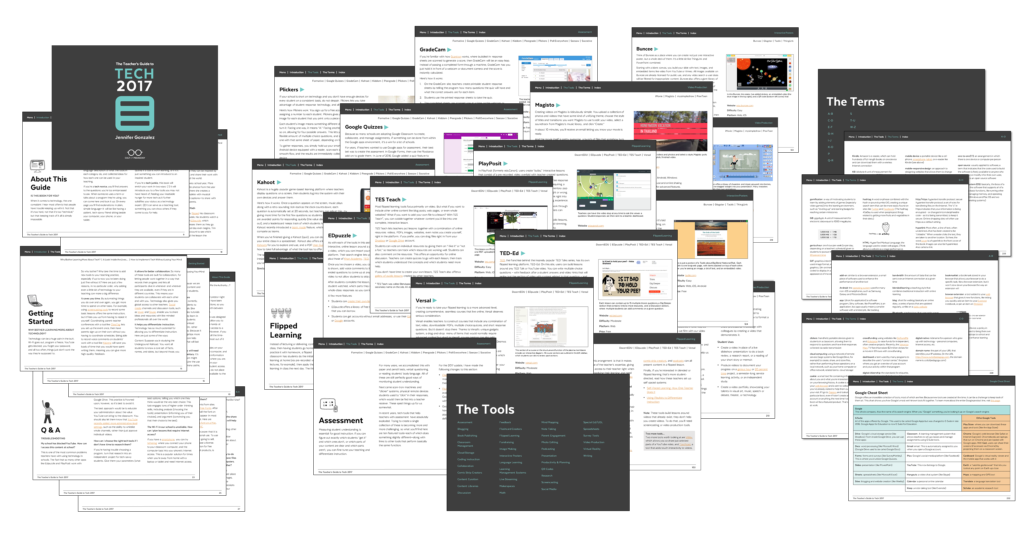
The whole purpose of the guide is to make it fast and easy for you to navigate the world of ed tech. Once you start using it, you won’t believe how much you’ll learn, or how FAST you’ll learn it!
Where to Get It
Single-User Licenses:
If you just want a copy for yourself, you can get a copy at Teachers Pay Teachers or on Teachable.
Multi-User Licenses:
To get the guide for your team, school, or even district, you can save a lot by getting multi-user licenses. Although these are available on Teachers Pay Teachers, I am offering deeper discounts for multiple licenses on Teachable.





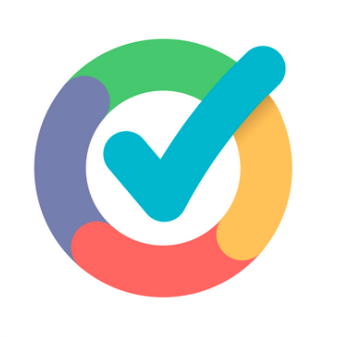

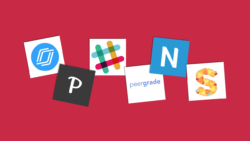
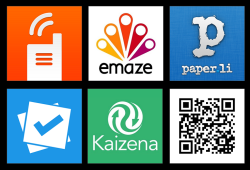


This looks great! I just bought your Tech 2015 and I am working through the Jump Start guide. Does this work with the Jump Start Guide too? Or is it a standalone guide? Thanks!
Hey Suzanne! The JumpStart course was created to work with the Guide (think of the Guide as the “textbook” for the JumpStart course). I haven’t uploaded the update for the course yet, but I will hopefully by the end of the day today. The only change in the JumpStart course is the page numbers of the reading assignments.
Also, whenever you’re ready to look at the 2016 version of the Guide, it’s free to you, since you already purchased the 2015 version. Just go to “My Purchases,” then go to the Tech Guide listing, and you should be able to download the new update for free.
Thanks!
What is the cost of this e-book on using technology tools for teaching?
Hello Mantena! You can see the price here: https://www.teacherspayteachers.com/Product/The-Teachers-Guide-to-Tech-1768537
So excited to check out formative, write about, and noisli! Thanks for these suggestions!
Come back and tell us how they worked for you, Lorie. More teacher reports on their actual classroom experiences will definitely add value for other teachers.
I would definitely be interested in how you used noisli! I think it could be super effective in a classroom. So I’d love to hear about your experience.
I stumbled upon this from Twitter. You’re books looks awesome! Are you doing any sort of discount since you just updated? (Can’t blame a girl for trying right?)
Hey Jeanie! No, not at this time. Teachers Pay Teachers does run sales occasionally though!
Hi Jennifer, thanks for sharing these tools. I wasn’t aware of Write About, but it looks like a tool I am going to try out with my students as it could make the entire student writing process (idea gathering, writing, providing feedback) much easier.
Another tip I wanted to share with you is http://start.me. I’m using it for a few months now and it’s great for keeping your “digital classroom” organized.
You can create and share start pages filled with bookmarks, feeds, notes, to-do’s, etc. It’s super user friendly and completely (ad) free for Educational use.
Thanks for the recommendation, Tom. I keep a running list of tools to check out for future updates of the guide, so I will definitely add it!
Jennifer, I’m amazed by the tools you’ve suggested! Google Cardboard seems spiffing, genius is simplicity. My personal discovery of the year is Unplag, this online checker helped me to beat plagiarism in my classroom and engage students into essay writing process. Here is the website: https://unplag.com/ , hope you’ll like it too.
Thanks for the tip, Leonarda! I have tried Unplag and it works pretty well!
Noisli.com does not work for me. 🙁 I’ve tried everything I can think of – switched from a speaker to headphones, tried Firefox, Chrome, and IE…it just won’t make a peep. I even signed up for an account to see if that would help.
I’ve just emailed them – we’ll see if they respond. I was excited when I heard your podcast and you mentioned this because I am a computer teacher and the kids journal every day. I thought they could listen to this while journaling. But not if it doesn’t work! 🙁
PS This is my first time commenting on your site but I’ve been a big fan of yours for a long time. I am an avid podcast listener. I told my sister about you (she also teaches) and she loves you just as much as I do. 🙂
Oh my goodness! Thank you so much for the P.S.!! And I’m thrilled that you broke your silence! It kills me that Noisli isn’t working for you. If they get back to you and you figure out a fix, please come back and tell us what went wrong so that others with the same problem can be spared the trouble. Have a good day, Havilah!
It turns out that it was a filter in place at our school. I forwarded your article to our IT department and talked them into letting me take the filter off for this website. So thank you!!!!
I’m really excited to look at Google Cardboard more in depth, for sure! That seems super-fun and engaging for kids. Here’s a question about all this, though… I teach 6th grade Language Arts and while many kids (and more each year!) have smartphones readily available in the classroom to use daily, many do not. Looking at how I was raised, I personally would never have been allowed to have one at that age. So keep sharing the awesome information because I do see us heading more into a 1:1 technology-rich time! I’m really excited to use some of this stuff, even in the limited capacity of technology that we have right now!
Hey Laura,
I had a question last week that related to this–another teacher was wondering about whether a more affordable type of smartphone was on the market, so he could maybe set up a Donors Choose campaign to purchase some for his classroom. I haven’t found anything yet, but that doesn’t mean it’s not out there. I also wonder if the iPod touch would work. You don’t necessarily need phone service, just the Cardboard app. I’m hoping some tech company can come out with a line of handheld devices that would be affordable for classroom uses just like this. If I hear of anything, I’ll let you know. And if anyone reading this knows about a product like this, please share!
This site/podcast was a delightful treat to find this morning. I am using Noisli as I type and I am signing up for Formative. Thank you so much for everything you are accomplishing!
I’m so glad to hear that you enjoyed it, Anoop!
Great list!
I invite you to check out Wizer.me
An easy tool to make blended online learning worksheets.
Now it’s easy to make beautiful, engaging educational experiences.
*Plus it has automatic grading so it saves tons of time!
That looks like a useful tool, Nikki. Thanks for the recommendation!
Just so you know I am using Noisli almost every day and loving it, even downloaded the Chrome app and implanted it in my tool bar. I have listen to your every Podcast (I have a 1.75hr commute) and thanks to you and your guest I have traveled down a rich rabbit hole of online PD via Podcasting and Twitter. I am an instructional coach at Tulsa Public Schools if you ever want more info on what we do as coaches hit me up @service_est1994.
Hey Kyle! It’s good to meet you. I’m thrilled to know you are liking the podcast. I was just in Tulsa (actually Owasso) last October giving PD for a day. Awesome people in your part of the country! I’m also excited to be spreading the good word about Noisli 😉 Thanks so much for taking the time to comment!
Hi Jennifer! Saw this link on Pinterest and I’m so thrilled I did. I’m studying Primary Education in Australia and can already see Noisli is going to be my best friend for studying and playing it to my classroom when I have prac. Can’t wait! Thank you for all your wonderful suggestions for the rest. Wonderful tools to add to my teaching resource! Kind regards, Renae.
Hi Renae! I’m so glad you found it and liked it! And I’m so glad I followed my instincts to share Noisli with the world. I wasn’t sure if everyone would love it as much as I do, but it’s looking that way. Thanks for taking the time to comment!
Hi Jennifer!
It’s lika a dream come true. I always hoped that someone could help me find terrific apps to use in my class. It’s a jungle out there and we, as teachers, haven’t really the time nor the energy to try everyone out. These apps looks so tempting and I really want to try them all. Thanks a lot for all your work and effort!
Language teacher from Sweden
Great! Just bought the book. In the next update please add timeline software, another great way to teach and learn deeper in any discipline.
Thanks for the suggestion. Do you have a specific tool you use for timeline creation?
Some of our instructors use TikiToki and others use Dipity but complain that it is unstable. There is also an add-on to PPT but only for the 2016 version? What we always look for is an app that we can add to our LMS via LTI. Still looking for the ideal timeline.
Thanks for this. One tool I’d like to recommend has more to do with content (instructional) apps, which definitely have a place in the classroom. The problem is, most are really terrible in design and educational content. I use Balefire Labs’ http://www.balefirelabs.com review service because their metrics are objective measures of elements of learning within the apps; the highest ratings going to apps that are adaptive and mastery based. Though, another word of warning, not all apps that claim to be adaptive are. Anyway, check them out and see what you think.
Do you know of any teachers that are posting lessons on periscope now? Thank you
Hey Jason! Not that I know of. If I ever hear of anyone, I’ll come back here and add the info.
Great article Jen! I’m yet to try Google cardboad, curious to see what all the hype is about.
Thanks, Ace! Let me know what you think!
I recommend trying copyleaks.com as a way to see if your students plagiarized unknowingly. I’ve used this recently as a blogger and found that some of my content was being taken and not cited. Very easy to use!
Ahh this is amazing! Thanks so much Jennifer! I am playing around with Versal now. I was wondering if you know if its O.K to sell the versal courses you create on TpT?
Hi, Georgie! I’m a Customer Experience Manager with Cult of Pedagogy and we don’t really know the answer to this, but we suggest contacting Versal and TpT to confirm their Terms and Conditions. Hope this helps!
Hello Jennifer, all the way from Prague, Czech Republic. First of all – amazing Podcast, I am listening one by one from the beginning and I am right here at the moment.
I checked Versal.com right now and it seems that for school it is super expensive – $420/mo seems to be quite off the hook (https://versal.com/education). Was it free back when you were doing the podcast?
Hi Marek,
That does seem steep! If you look underneath the plan options, it does look like individual teachers can still get free plans, so I would definitely go with that if I were going to try it!